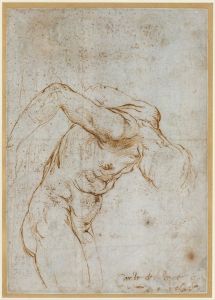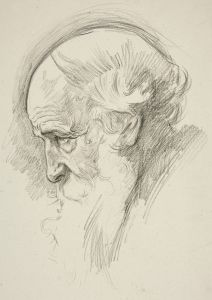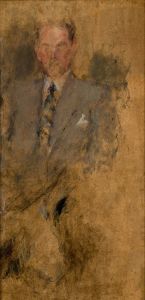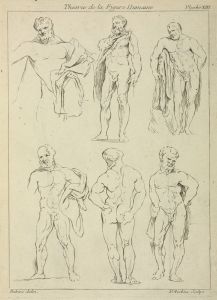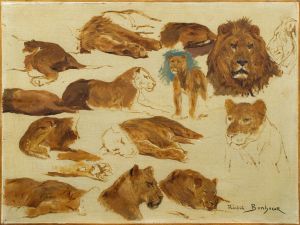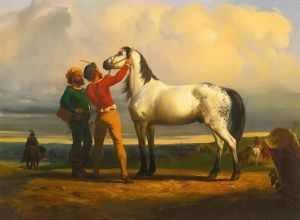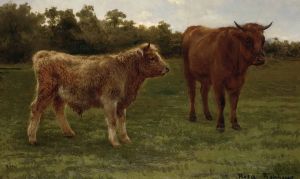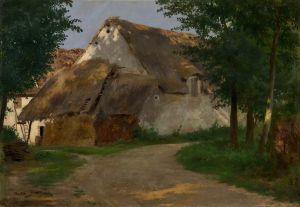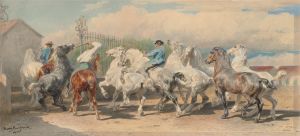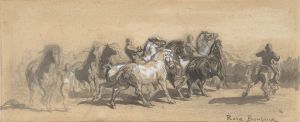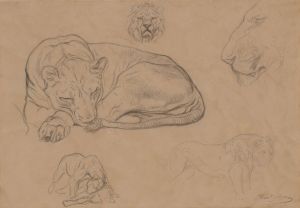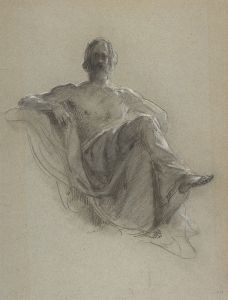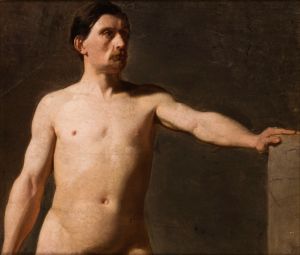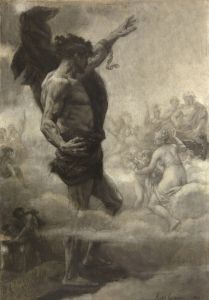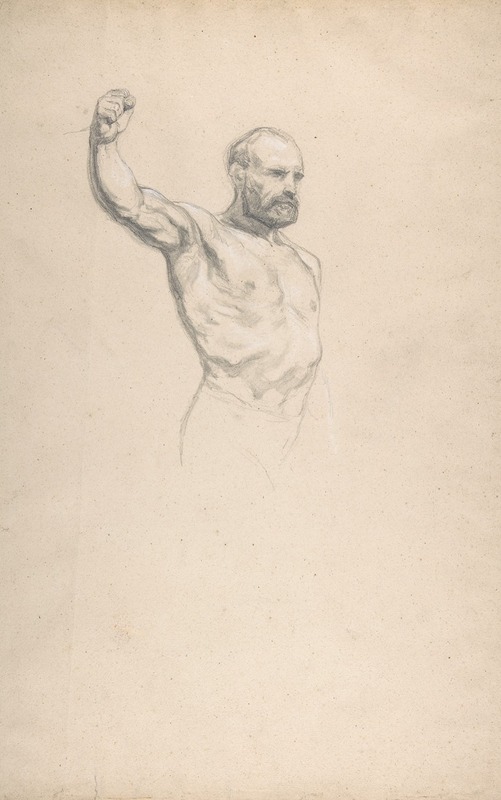
Bearded, bare-chested male figure, study for ‘The Horse Fair’
A hand-painted replica of Rosa Bonheur’s masterpiece Bearded, bare-chested male figure, study for ‘The Horse Fair’, meticulously crafted by professional artists to capture the true essence of the original. Each piece is created with museum-quality canvas and rare mineral pigments, carefully painted by experienced artists with delicate brushstrokes and rich, layered colors to perfectly recreate the texture of the original artwork. Unlike machine-printed reproductions, this hand-painted version brings the painting to life, infused with the artist’s emotions and skill in every stroke. Whether for personal collection or home decoration, it instantly elevates the artistic atmosphere of any space.
Rosa Bonheur, a renowned 19th-century French artist, is celebrated for her realistic depictions of animals and rural scenes. One of her most famous works is "The Horse Fair," painted between 1852 and 1855. This monumental painting captures the vibrancy and dynamism of a horse market in Paris, showcasing Bonheur's exceptional skill in portraying animal anatomy and movement. As part of her preparatory process for this masterpiece, Bonheur created several studies, one of which is known as "Bearded, bare-chested male figure, study for ‘The Horse Fair’."
This particular study is a testament to Bonheur's meticulous approach to her art. She was known for her dedication to realism and often conducted extensive research and preparation before embarking on a major work. For "The Horse Fair," Bonheur visited the Paris horse market regularly, dressed in men's clothing to avoid drawing attention and to gain better access to the subjects she wished to study. This allowed her to observe and sketch the horses and people with great detail and accuracy.
The study of the bearded, bare-chested male figure is an example of Bonheur's focus on the human figures that would accompany the horses in her final composition. While Bonheur is primarily celebrated for her animal paintings, she also paid careful attention to the human figures in her works, ensuring they were as lifelike and dynamic as the animals. This study likely served as a reference for one of the handlers or traders depicted in "The Horse Fair," capturing the physicality and presence of the individuals who worked closely with the horses.
Bonheur's ability to convey the strength and character of both humans and animals in her studies and final works contributed to her reputation as one of the leading animal painters of her time. Her work was highly regarded not only in France but also internationally, earning her numerous accolades and honors. In 1865, she was awarded the Legion of Honour by the French Empress Eugénie, becoming the first female artist to receive this distinction.
The study of the bearded, bare-chested male figure exemplifies Bonheur's commitment to authenticity and her skillful rendering of the human form. It reflects her broader artistic practice, which combined keen observation with technical proficiency. Although this particular study may not be as widely recognized as "The Horse Fair" itself, it remains an important piece of Bonheur's artistic legacy, illustrating the depth of preparation and attention to detail that characterized her work.





